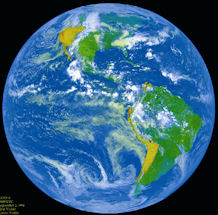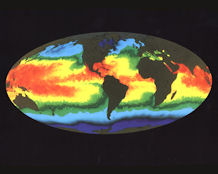Impacts of the Japanese Tsunami on Ocean Life
![]() Posted: 04/ 7/11 03:21 PM ET Post by John Bruno for the Huffington Post Blog
Posted: 04/ 7/11 03:21 PM ET Post by John Bruno for the Huffington Post Blog
Impacts of the Japanese Tsunami on Ocean Life
 As terrible as the impacts of the Japanese tsunami have been, one issue barely being covered by the media is the potentially massive effects on ocean life and ecosystems.
As terrible as the impacts of the Japanese tsunami have been, one issue barely being covered by the media is the potentially massive effects on ocean life and ecosystems.
I can’t say too much as a scientist simply because there is no data on what is happening; nobody is measuring sediment input, toxin levels in seawater, etc. But I can cautiously speculate about some of the local and regional effects over the short and long term.
First, if you saw any of the videos of the tsunami waves coming ashore, you saw that the water was already brown, likely due to the scouring effect of the waves. Within minutes, most of the seawater that destroyed coastal communities returned to the ocean, bringing untold tons of stuff with it; all the remnants of humanity including pieces of buildings, cars, trees, garbage, huge amounts of plastics, eroded soils and likely a wide variety of pollutants from those soils, homes, factories, stores, etc.
The sediment input alone could devastate coastal habitats such as seagrass beds and oyster reefs that were not directly destroyed by the force of the tsunami waves. Filter feeding bivalves like oysters are not tolerant of highly sediment loads in the water. And seagrasses are especially sensitive to sediment since they need light for photosynthesis (suspended sediments make the water less clear, reducing light penetrance).
Ecologists refer to organisms like seagrasses and oysters as “foundation species” since they create the habitat that countless other creatures inhabit. Thus loosing them means loosing the habitats, the fish that inhabit them, etc., with obvious effects on fishing. More directly, oyster fisheries are huge in Japan and the oyster farms must have been wiped out in many areas. The systems and organisms will certainly recover eventually, but it could take decades.
Moving beyond the direct physical damage and sedimentation I expect the chemical pollutants washed out to sea could have some effects, at least locally on some organisms. This will take years to evaluate.
Then there are the plastics and non-biodegradable junk that will initially pollute the Japanese coastline and will then move out to sea, eventually reaching the north Pacific and the western shores of North America. Nikolai Maximenko and Jan Hafner at the International Pacific Research Center, University of Hawaii at Manoa have projected the long term path of much of the ocean debris washed away by the retreating tsunami waves. Dr. Maximenko is well known for his work on predicting the locations of the major ocean garbage patches, places where debris accumulate and remain for decades. (read more about their study here)
And check out the neat animation of their model by clicking the image below.
Another clear threat is leakage from the Fukushima nuclear power plant. High radiation levels have been reported, although little information is being collected (or released) about the radioactivity concentrations offshore off the plant.
Workers prepared more tanks on Thursday to transfer radioactive water from the turbine buildings at Reactor Nos. 1, 2 and 3 to keep it from flowing into the ocean. But readings taken in the sea near the plant showed that levels of the radioactive isotope iodine 131 have continued to rise, testing at 4,385 times the statutory limit on Thursday, nearly four times higher than on Sunday, said Hidehiko Nishiyama, deputy director general of Japan’s Nuclear and Industrial Safety Agency. That rise increases the likelihood that contaminants from the plant are continuously leaking into the sea, he said. From the NYT here
Yesterday, several news outlets reported that sampled fish near the crippled Fukushima reactor are showing high levels of radioactivity, which isn’t too surprising since workers at the plant dump over 1000 tons of contaminated water into the ocean Monday night.
The WSJ reports that Japanese authorities discovered fish swimming off the country’s Pacific coast carrying high levels of radioactive materials. And the NYT’s story “Screen the Day’s Catch for Radiation” reports “In the United States, where about 4 percent of food imports come from Japan, the Food and Drug Administration has restricted some foods from the country. And the agency is working with customs officials to screen incoming fish and other food for traces of radiation.” The findings are stoking fears in seafood markets and restaurants around the world, perhaps unreasonably at this point.
Overall, this is just a giant mess, the effects of which on the ocean are going to take a long time to understand and document.
This article is based on several posts from SeaMonster, a blog about all things ocean – science and sports, creatures and ecosystems, conservation and discovery.
Follow John F. Bruno on Twitter: http://www.twitter.com/SeaMonsterblog











